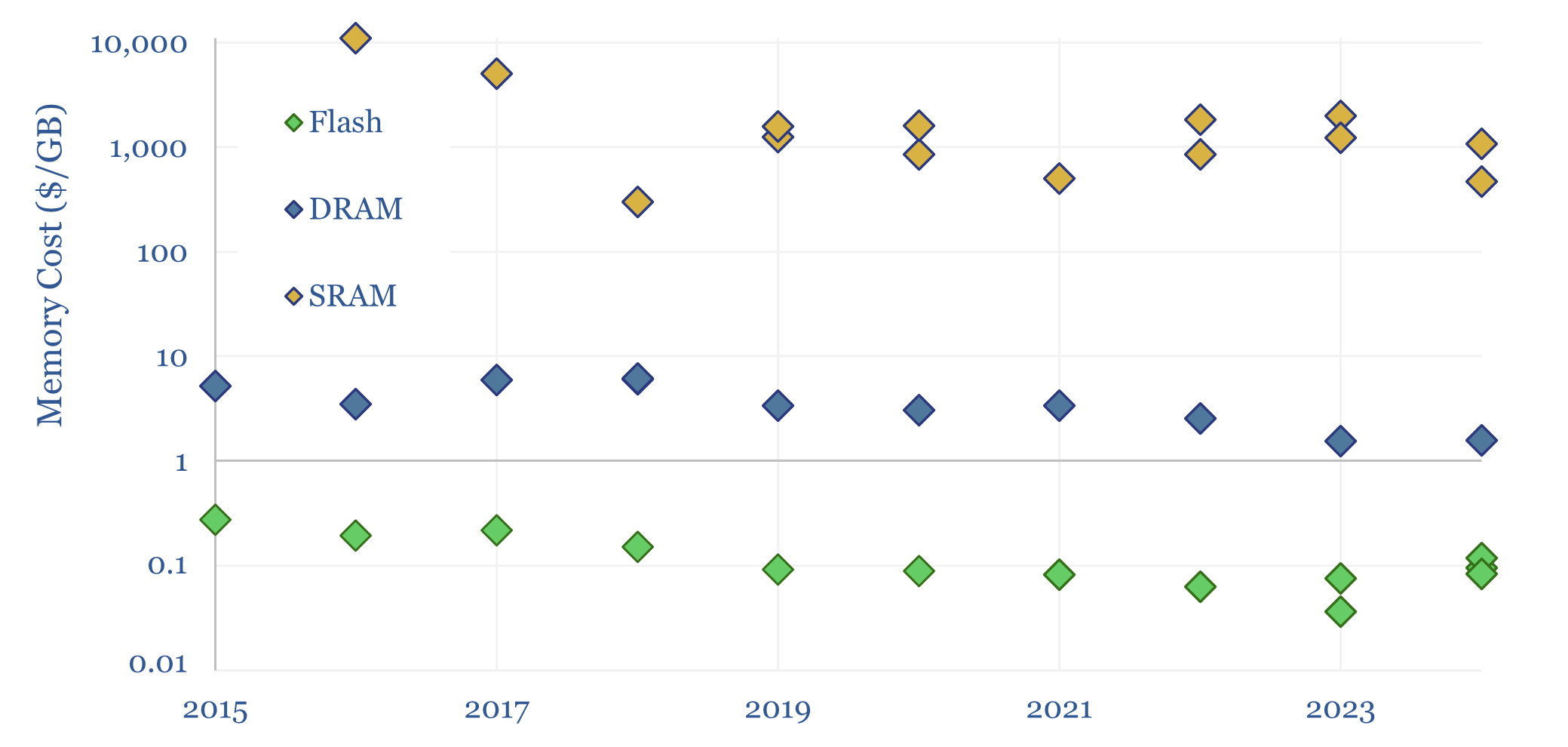Three types of computer memory dominate modern information processing: Flash, DRAM and SRAM. This 5-page note simply covers each one, how it works, what it costs, advantages, disadvantages, market sizes and leading companies. AI likely boosts all three, but can more SRAM unlock big efficiency gains?
AI has become one of the largest and most important topics in energy markets, as covered in our AI research. In order to understand future AI energy consumption, possible efficiency gains, and the landscape more broadly, this note is a simple five-page overview of different types of computer memory.
Computing is about ‘1s’ and ‘0s’. In processing, a conductive transistor represents a 1. In memory, 1s and 0s are stored based on whether a cell is or is not charged. Key variables that matter are cost (in $/GB), latency (in nanoseconds), energy use per read/write cycle (in pJ/bit) and duration (Flash is non-volatile, while SRAM, and especially DRAM must constantly be supplied with power).
How Flash memory works, what it costs, plus key advantages and disadvantages are covered on page 3.
How DRAM works, what it costs, plus key advantages and disadvantages are covered on page 4.
How SRAM works, what it costs, plus key advantages and disadvantages are covered on page 5.
Long, deep-dive notes could be written on each of these topics. But we will save that for another time. This 5-pager is simply a quick overview of the key facts on each one, plus our best simple schematic showing how information is written into memory, retained in memory, and read from memory.
For more background, see our overview of semiconductors and overview of AI computing.
